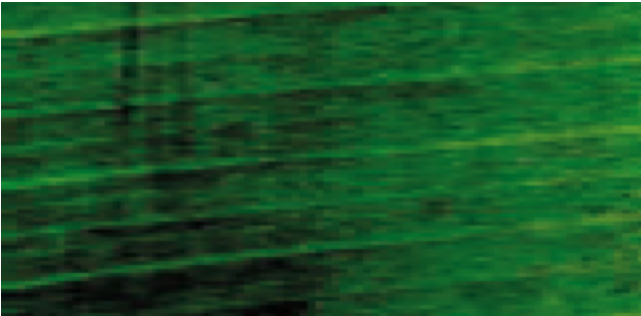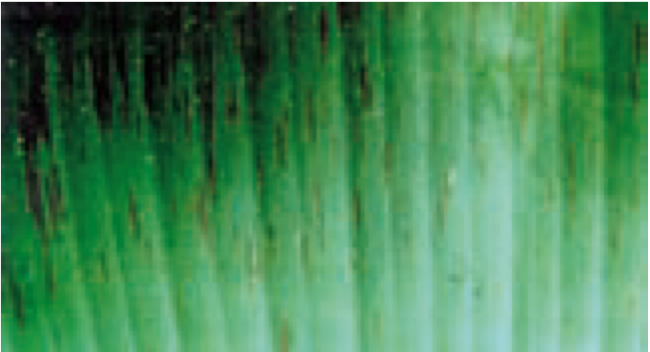BANOLE®
Crops & the environment
Biodegradable Fungicide Adjuvant for the control of Black Sigatoka disease
Black leaf streak caused by the fungus Mycosphaerella fijiensis (Black Sigatoka) is the most destructive leaf disease on Banana. Severe leaf spotting adversely affects photosynthesis capability of the leaves and when few leaves are retained on the plant at harvest time, the fruit will prematurely ripen in the field.
For many years, TOTAL has been closely involved in the control of Sigatoka disease on banana trees with the adjuvant BANOLE®, which was specifically designed to help combat the disease. TOTAL is a world leader in the Banana Spray Oil market thanks to the many years of experience it has accumulated. BANOLE® is commercialized as a specific adjuvant for aerial & ground applications in France, Spain, Mexico, Guatemala, Belize, Brazil, Honduras, Nicaragua, Costa Rica, Panama, Colombia, Ecuador, Venezuela, Dominican Republic, Jamaïca, Guadeloupe, Martinica, Ivory Coast, Cameroon, Indonesia and the Philippines.
Control of the disease
The control of the disease is based on the alternative use of contact, penetrant and systemic fungicides of different action site, in order to prevent or delay the build-up of fungal resistance, together with an adjuvant allowing even distribution on the leaves with a low application volume, with or without water. Care should be taken when using penetrant and systemic fungicides, as they act in a site specific way on the fungus. When used repetitively, the fungus can become resistant to the fungicide, due to the selection pressure they exert upon the fungus.
In order to observe the development of the disease, 6 stages of the disease have been identified (FOURE scale):
Stage 1: Small depigmentation mark whitish or yellow, progressively turning brown. Symptoms are not visible in a transmitted light (observed with the light shining through the leaf) and are therefore observable only on the under side of the leaf.
Stage 2: Depigmentation takes the shape of a generally brown coloured dash on the inner side of the leaf. This symptom then appears on the upper part of the limb and the dash progressively takes on a brown then a black colour. It measures generally 4 mm long and 0.5 mm wide.
Stage 3: This stage differs from the preceding one in its dimensions. The dash gets longer, broader and may, under certain conditions, reach 20 to 30mm.
Stage 4: It appears as a brown, coloured mark on the inner side of the leaf, a black one on the upper side, round or elliptical in shape only visible if the density of the dashes of stages 2 and 3 is not much important on the leaf.
Stage 5: The blackening of the elliptic mark is total. It is generally surrounded by a yellow halo and its centre begins to cave in. The mark has reached its definitive dimensions.
Stage 6: This last stage shows great analogy with the final stage of the yellow Sigatoka disease. The centre of the spot dries out and takes on a grey shade. The lesion is generally surrounded by a rather narrow black margin edged itself with a yellow coloured fringe.
BANOLE
Paraffinic adjuvant
TOTAL’s research centre worked closely with banana growers to develop a new adjuvant which would achieve the following objectives:
➜ Allow an even distribution of the fungicide on the leaves,
➜ Slow down the development of the disease by enhancing the incubation period of the fungus and increasing the development time between one stage to another,
➜ Increase the contact period and the penetration of the fungicide at the cuticle and stomata level.
BANOLE® increases the efficacy of the treatments without inducing phytotoxicity and avoids any danger to human beings and the environment. The innovative characteristics and different molecular structure result in better disease control by:
➜ A better penetration and distribution of the product
➜ A highly adhesive film
➜ An optimum contact duration
➜ A fast penetration
BANOLE® is supplied as a ready to use emulsion concentrate (96.9%w/w paraffin oil).
Use of BANOLE
This environmentally friendly product has to be applied correctly in order to avoid any damages to the plant:
➜ Mixing instructions: Half fill the tank with clean water, add the volume required of BANOLE® and mix until a homogeneous liquid emulsion is obtained. Add the necessary quantity of fungicide and continue to mix. Make up to the required volume of water and mix until a homogeneous mixture is obtained. After mixing, use the mixture immediately, while continuing to stir. Avoid spraying during hot and sunny periods to maintain maximum effectiveness.
➜ Spraying: Use air blast sprayers or hand operated sprayers and adopt multiple ‘high volume, low concentration sprays’ principles. Spray from top down and avoid contact with fruits. Do not apply more than a maximum dose of 15 litres/ha of BANOLE®. The spraying frequency should be adjusted according the pressure of the Sigatoka infection. Comply with the uses, doses, conditions and precautions for use stated on the packaging of fungicides used to control banana Sigatoka diseases (Mycosphaerella musicola, Mycosphaerella fi jiensis).
➜ Incompatibility: BANOLE® is compatible with most of the fungicides used for Sigatoka control, except with Chlorothalonil
➜ Waiting period: BANOLE® should be applied after an interval of not less than 12 to 18 days after a treatment containing Chlorothalonil.
➜ Restrictions: Whenever possible, spray in the morning when the temperature is below 30°C. Avoid spraying during hot and sunny periods to maintain maximum effectiveness. Respect use, dosage and directions for use mentioned on this label.
Aware of the need to preserve our ecosystems and ensure optimum crop harvests, TOTAL has launched a range of spray oils to avoid the many drawbacks of using chemicals to protect crops. TOTAL carries out research into new ways of fighting the disease and the insect pests that ravage our crops, in collaboration with International Research Centres, Plant Protection Authorities, Agronomy Research Institutes and farmers. This combined research programme has led to the development of these very economical treatments, as the use of more effective compounds allows dosage to be reduced. TOTAL is committed, as part of a continual improvement process, to develop our group‘s activities with respect for, in acknowledgement of, and ensuring the health & safety of each individual (staff, partners, and customers), whilst minimizing any effects on the environment.
The manufacturer and the distributor do not accept responsibility for damage to crops, vegetation, the environment or harm to men or animals or for lack of performance of the remedy concerned due to a failure of the user to follow the label instructions or to the occurrence of conditions which could not have been foreseen in terms use. Consult the supplier in the event of any uncertainty.








